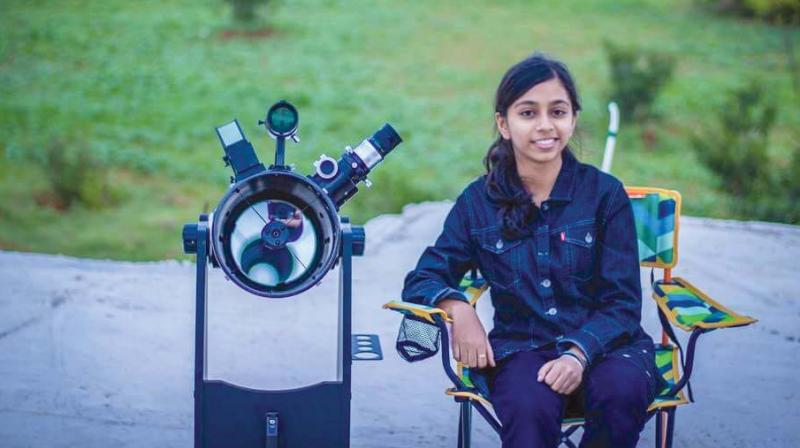Once in a Blue Moon, literally!
Much to the excitement of city folk, a phenomenal lunar eclipse is slated to occur on January 31. Youngsters share what their plans are...

An extraordinary total lunar eclipse is set to occur on January 31 – for the first time in over 150 years. This will be the second full moon of the month, also called the ‘Blue Moon’ and the first eclipse in the New Year.
We find out what astronomy enthusiasts are doing in the city to enjoy a view of the fascinating moon...
Keerthi Kiran, the co-founder of Bangalore Astronomy Society, experienced his first eclipse when he visited a village near Tumkur that gave a view of clear skies and had no pollution. He shares, “As we wait for the total lunar eclipse on Jan 31st, 2018, let me recall my earlier eclipse experience on December 10 in 2011. It was a wonderful lunar eclipse, since the whole eclipse was visible in India. As the sun set in the western sky, the moon rose in the eastern sky. We (the earth) were exactly in between the sun and the moon. I had a 1000mm focal length telescope with me to photograph the eclipse. I was using my old DSLR camera. As the moon rose, one portion of the moon started to get blackened. We were all excited.”
Students from across the city are also quite excited to be witnessing the event. Chinmayee LM, a PhD student at National Centre for Biological Sciences and a member of the Bangalore Astronomy Society says, “This is the first time I would be seeing such a lunar eclipse. I am very excited about it. I will be watching the event along with many other friends from the hostel terrace in Yelahanka. Though no equipment is required to witness this eclipse, we are planning to set up a telescope to take a closer look at the moon and be prepared to capture some beautiful shots of the copper moon during totality. It’s going to be an amazing evening.”
Manali Parvatikar, an 18-year-old student from Christ University says, “Well, I’ve seen the blue moon before. But at that time, had no clue about what it was. Since then, I got to know how are blue moons are. And now that there’s the eclipse, it’s a treat for the eyes. I have a small 3-inch telescope and I’ll observe the eclipse on 31st. I’ll probably try to catch some good lunar pictures with my phone camera through the telescope. There are a few kids around my uncle’s house; I’ll invite them over to my house to show them the moon and the eclipse. I’m sure they’d be enthusiastic and curious.”
We ask Prajval Shastri, a scientist with Indian Institute of Astrophysics to describe to us what the lunar eclipse actually means and how it takes place, “A lunar eclipse occurs when the full moon is obscured temporarily because the moon moves into the shadow of the earth cast by the sun. A lunar eclipse can only occur during the full moon but does not occur during every full moon because of the slight tilt between the plane in which the moon goes around the earth and the plane in which the earth goes around the sun. During a total lunar eclipse, the moon does not disappear, however, but instead appears to acquire a faint copper colour. This is because a small amount of sunlight that passes through earth’s atmosphere is refracted or “bent” towards the moon by the atmosphere, and this light is reddish because the atmosphere preferentially scatters away from the bluer light into other directions.”

